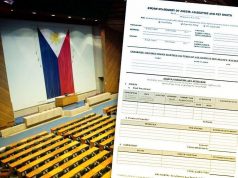BusinessWorld has reported that a listed company had just “broken ground” on a 1.1-megawatt (MW) solar photovoltaic (PV) rooftop project in one of its malls in Mindanao. The project, said to cost P67.4 million, is in line with the firm’s target capacity of 200-MW of electricity from solar PV rooftops in the next two years.
I consider this a very welcome development, considering reports of a possible shortage in the near future. On Tuesday, “reserve energy” in the Luzon grid reportedly dropped to “below minimum levels…due to the unexpected shutdown and limited generation of some power plants.” This was on the back of high demand for electricity. Available capacity on Tuesday was at 10,115 MW, while peak demand during the day hit 9,491 MW.
Electricity transmission grid operator National Grid Corporation of the Philippines (NGCP) said it is required to maintain a “regulating reserve” ideally equivalent to 4% of the demand for the hour. In addition, it should have a “contingency reserve” of about 600 MW — equivalent to the capacity of the largest power generating unit online — and “dispatchable reserve,” or readily available power to make up for any lost contingency reserve. Any drop in the level of any of these reserves prompts a system alert, as what happened on Tuesday.
The forecast is that El Niño, or the long dry season, will negatively impact particularly Luzon — where Metro Manila is — with peak demand seen hitting 11,403 MW in May. Hydroelectric power plants in Luzon are expected to reduce capacity by about by 30% in April-June. Luzon will have to import 200 MW from the Visayas grid and get another 150 MW from a diesel-run power plant to mitigate power outages.
It is thus a big deal for us that many businesses like shopping malls have been turning to solar power to make up for the gap in power supply. Solar technology and newer battery technology have now become more accessible to many. And with sunlight being a “free” source of energy, solar makes a lot of sense for a country like ours.
I am told that costs have gone down even for outfitting homes with solar panels, to allow for residential self-generation to some degree. I am uncertain however if solar power producers can still excess supply to the grid, at least to recover some of their costs in producing their own electricity.
Many government buildings now under construction, as well as privately owned commercial and residential buildings, are above ground. It will be great if these developments can already include systems and facilities that will allow for self-generation of electricity, even partially.
The same goes for train (PNR) and light rail (LRT and MRT lines) stations, which are mostly above ground. The same can be powered partly by solar energy by outfitting suitable surfaces with solar panels. A big portion of Metro Manila’s “concrete jungle” can actually be converted into “solar farms.”
In Germany, for instance, which is not even a tropical country like the Philippines, there are already plans to make all trains run on “renewable energy” by 2050. The effort may take 31 more years to achieve, but at least the German nation has a plan that is actually worth pursuing, and the will and determination to make it happen.

Germany has previously announced that it would give up nuclear power. At present, the entire country runs on 20% renewable energy. Deutsche Bahn, Germany’s national railway operator, has also announced plans to make all trains run on 100% renewable energy by the year 2050.
The German railway currently uses 2% of the country’s total electricity. So, its goal of going completely renewable will have a “powerful impact upon the nation as a whole,” noted environmental site inhabitat.com.
inhabitat.com added, “Deutsche Bahn’s switch to renewable energy will not only lower CO2 emissions but will also increase the railway’s competitive edge as the need for environmental protection becomes more and more urgent.”
Another interesting case is that of the village of Wildpoldsried in the state of Bavaria, also in Germany. The village reportedly produces “321% more energy than it needs” and “an impressive $5.7 million in annual revenue from renewable energy,” inhabitat.com noted.
And this is done by having “equipped nine new community buildings with solar panels, built four biogas digesters…and installed seven windmills.” In the village itself, inhabitat.com said, 190 private households have solar panels while the district also benefits from three small hydro power plants, ecological flood control, and a natural waste water system.
The Guardian, meantime, in a commentary by energy expert Leo Murray, noted that “solar giant Lightsource…[has] signed a 25-year power purchase agreement with Belfast airport that underwrote a neighboring £5 million solar farm, using a private wire to supply a quarter of the airport’s electricity needs.
It also reported that in the UK, authorities and experts are already looking into solar-powered trains, considering that many trains in the territory already run on electricity. This is given that “Network Rail is the UK’s single largest electricity consumer, with internal decarbonization targets and a strong incentive to reduce operational energy costs,” Murray added.
My point is this: if Germany and the United Kingdom can look into it, why can’t we? We now have more homes, and more shopping malls, using solar power or self-generating part of their electricity requirements. But, in my opinion, we can expand this further, and we can learn from the experience of countries like Germany and the UK.
We have more sunshine here than in Europe, given the longer dry season. But our solar initiative should already go beyond the private sector. There should be the political will on the part of the national government, as well as local governments, to go green when and where they can. Public facilities should shift to renewable energy. This should not be a choice, but a mandate. And voters should insist on it.
Marvin Tort is a former managing editor of BusinessWorld, and a former chairman of the Philippines Press Council
matort@yahoo.com



